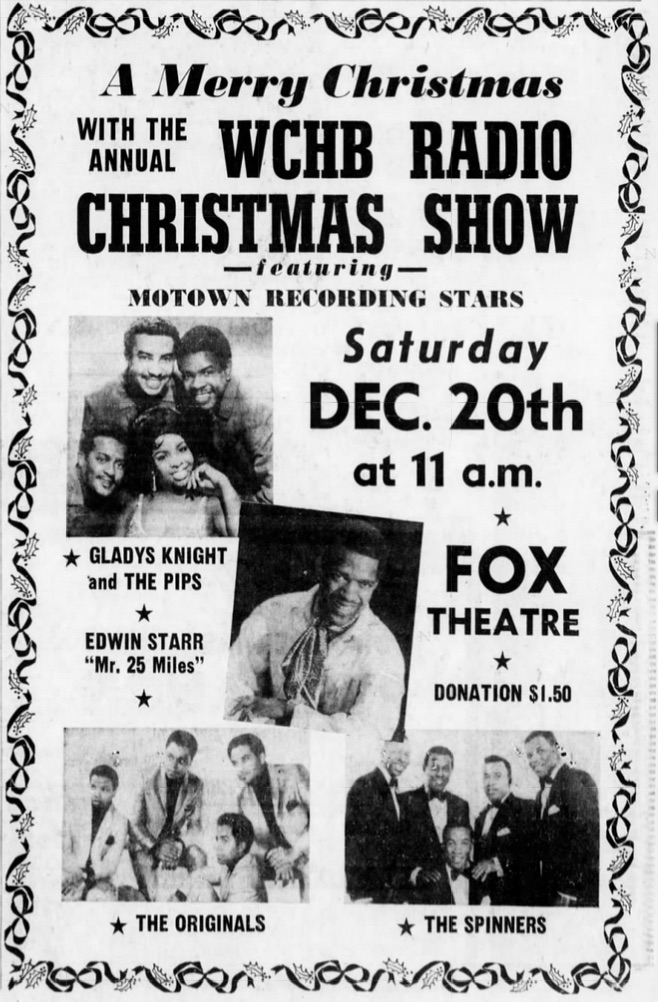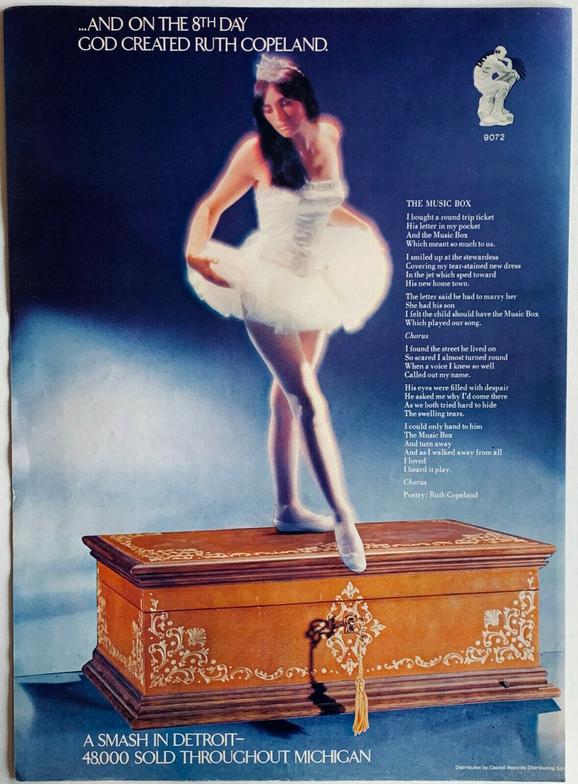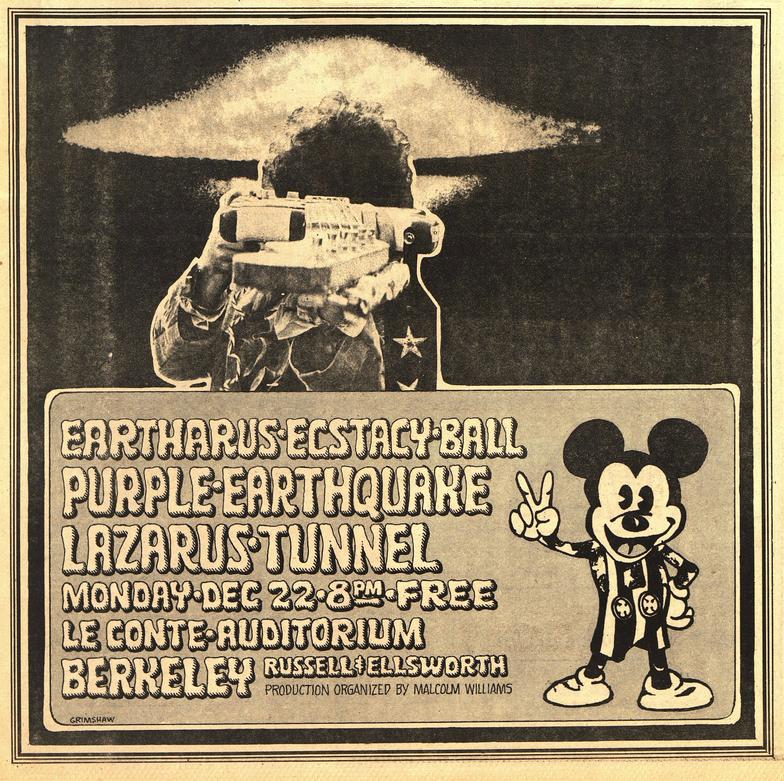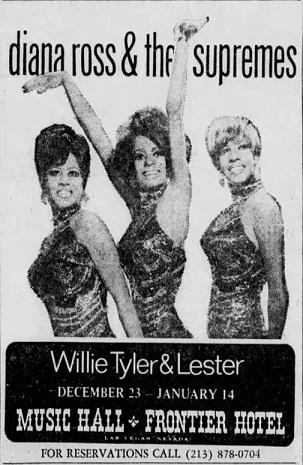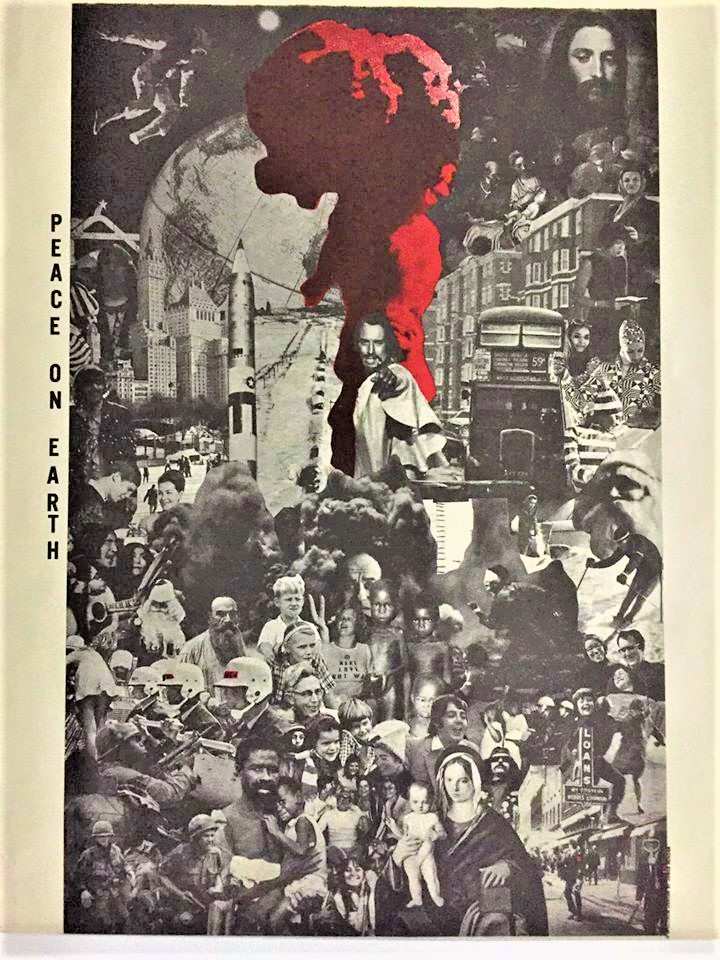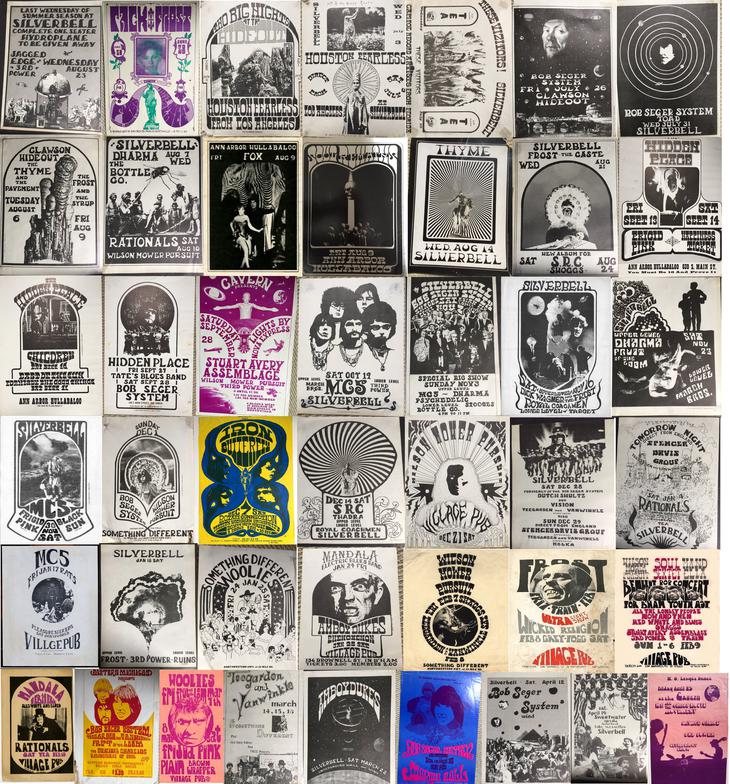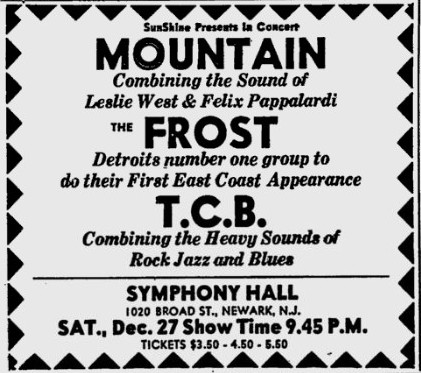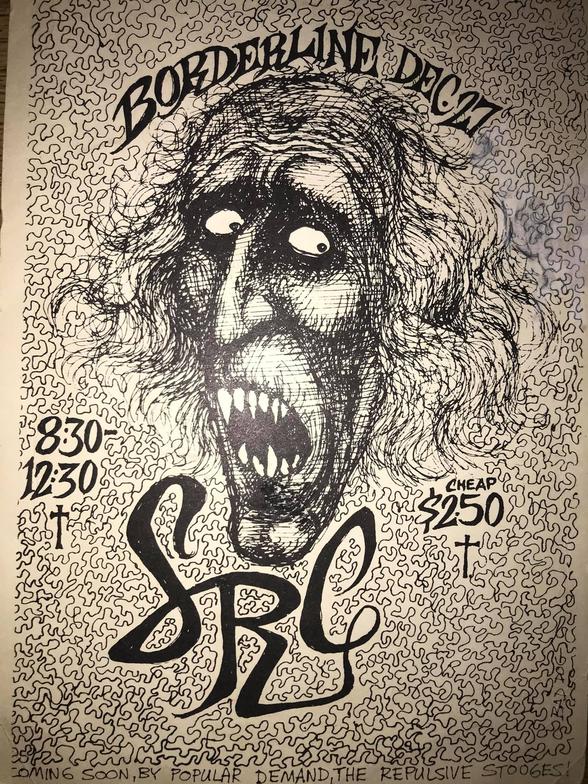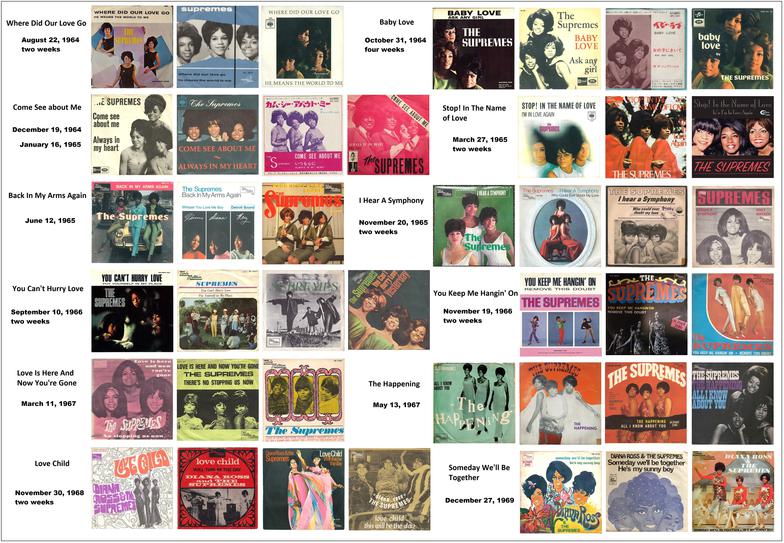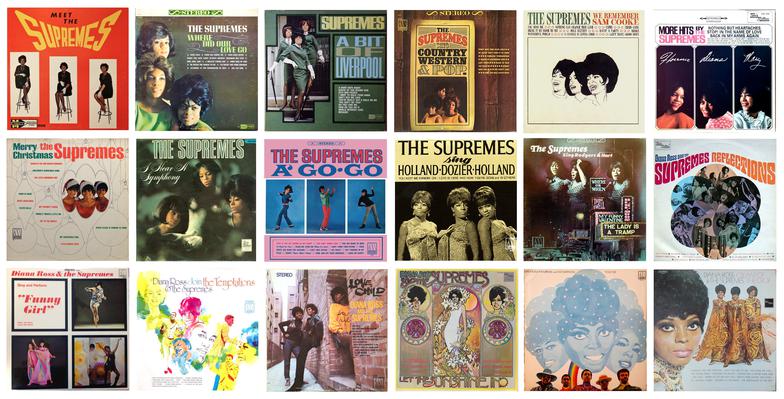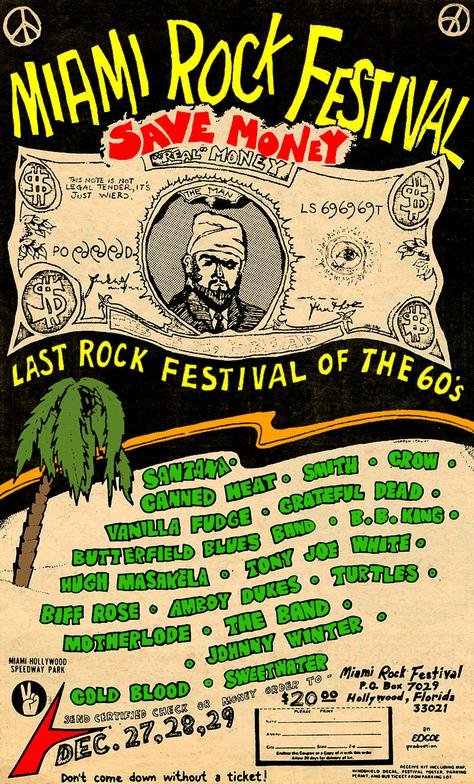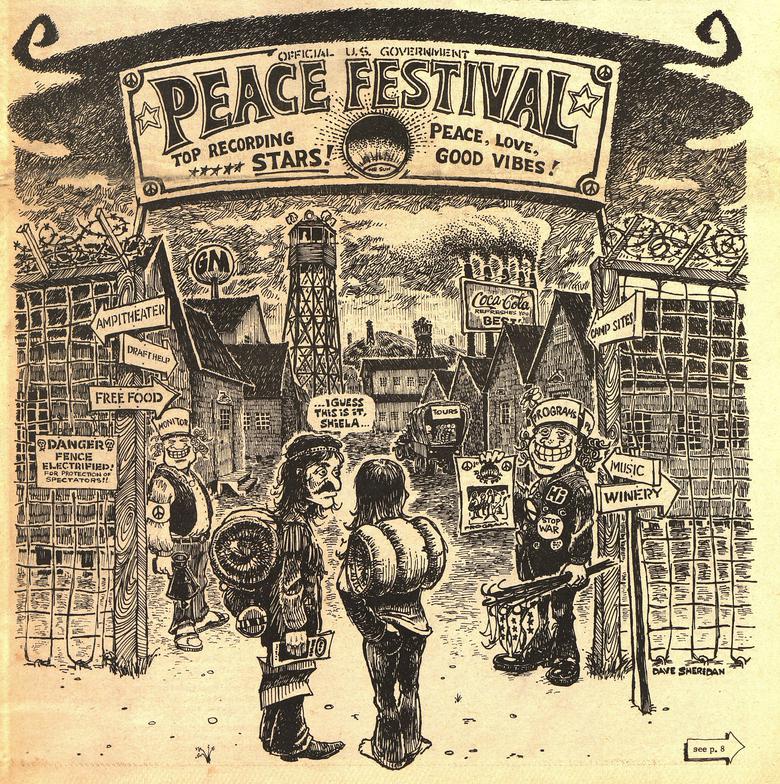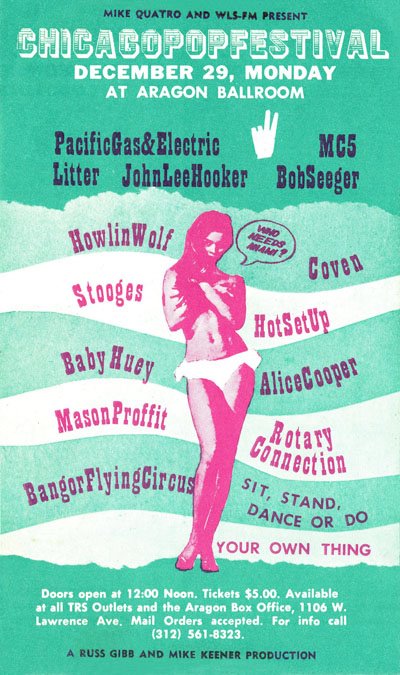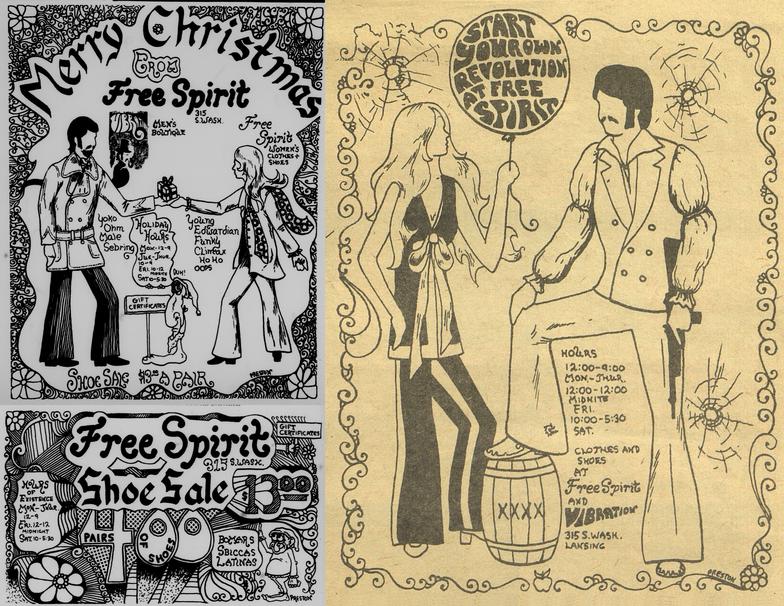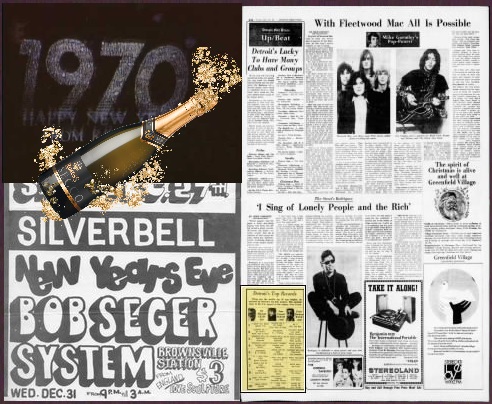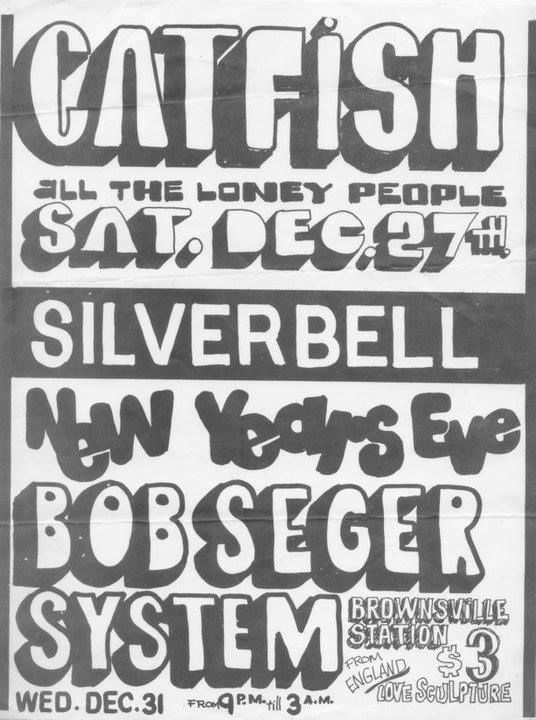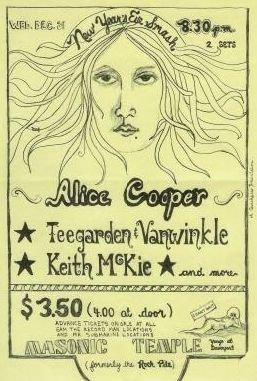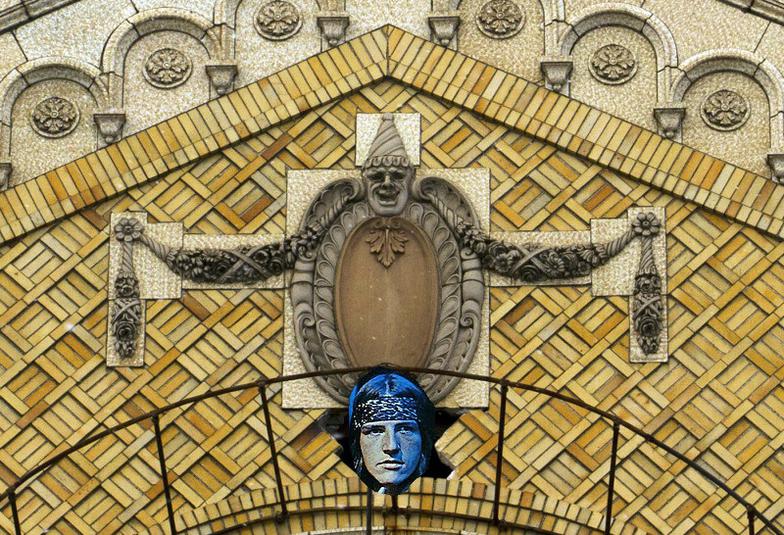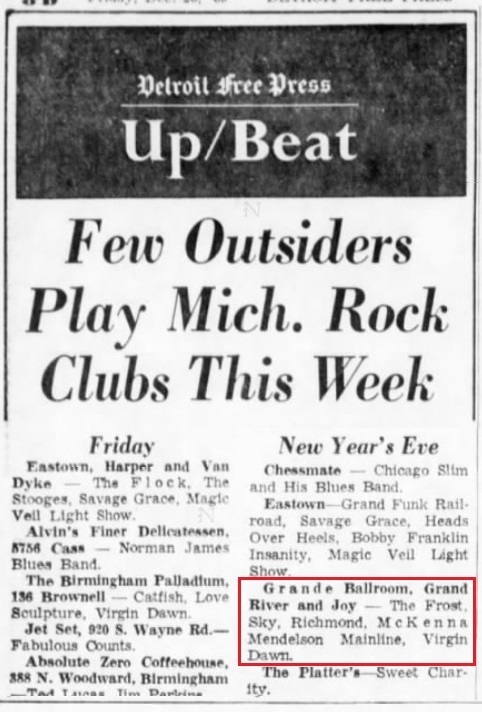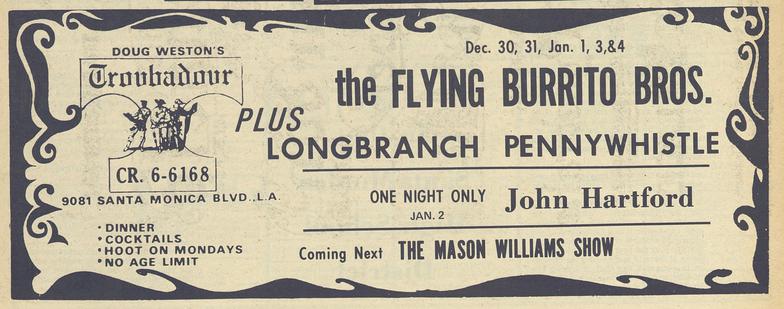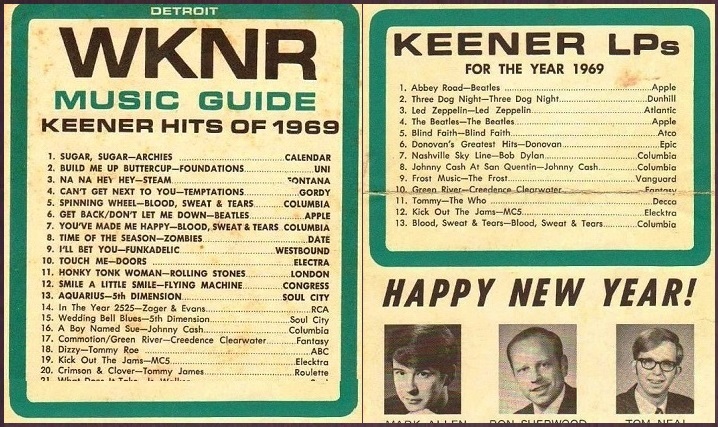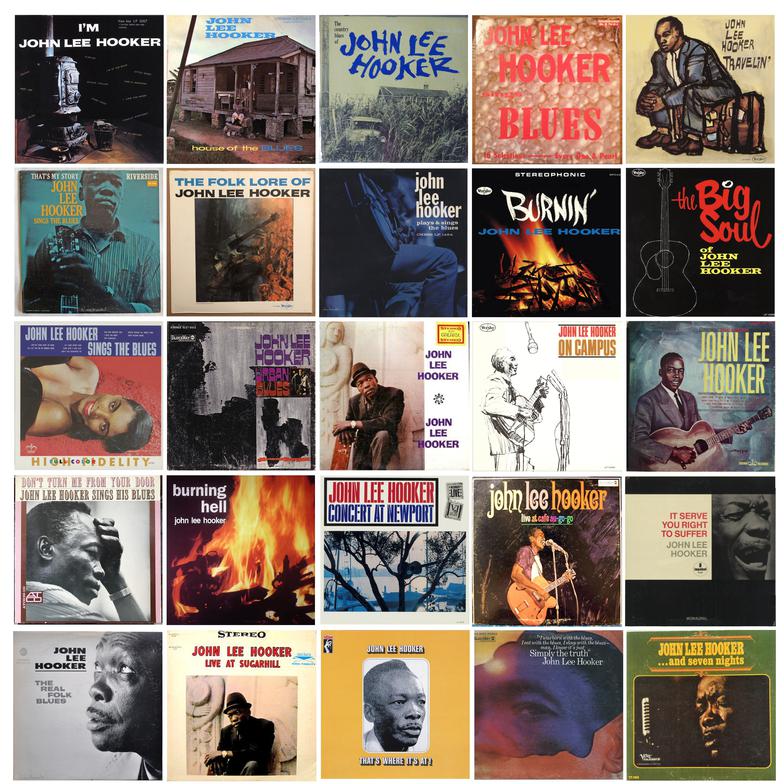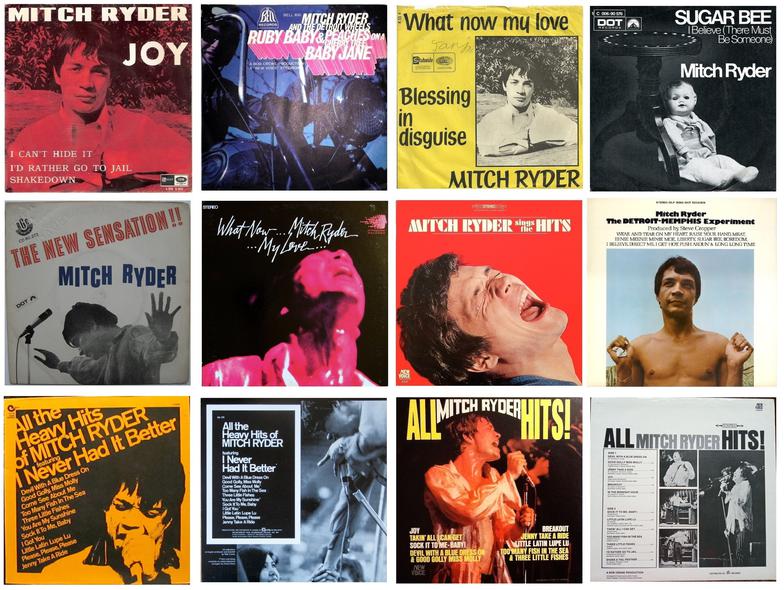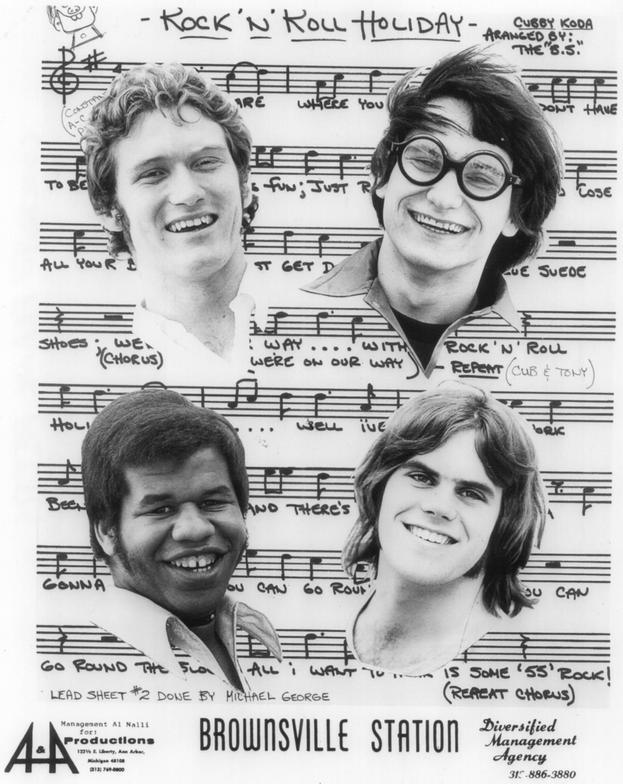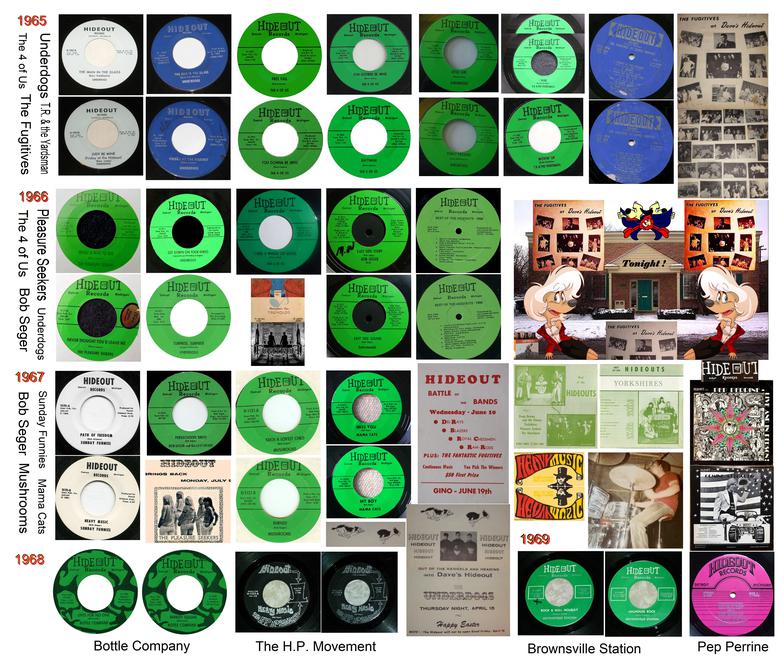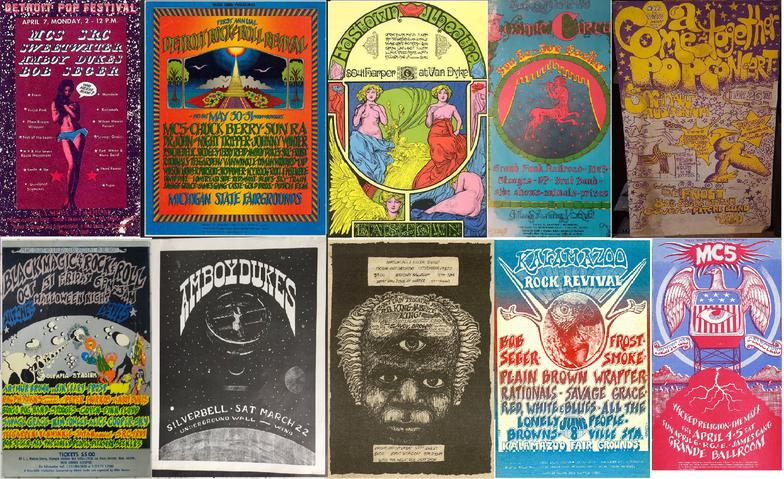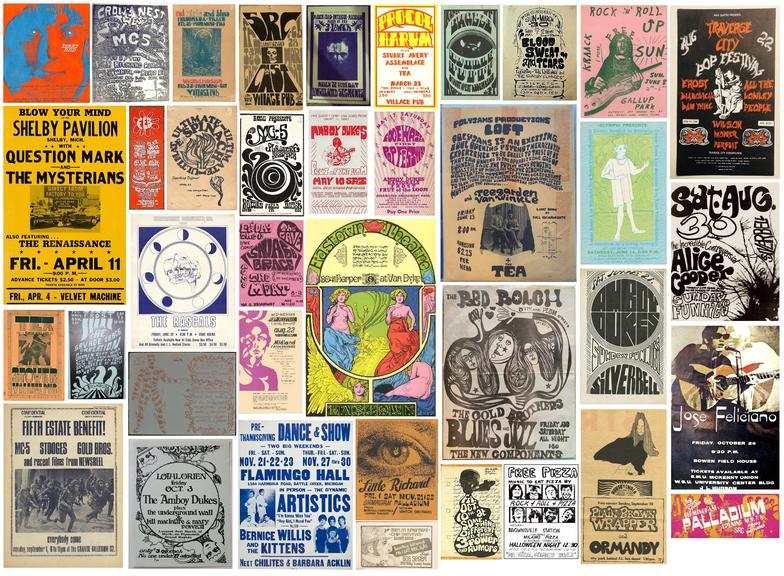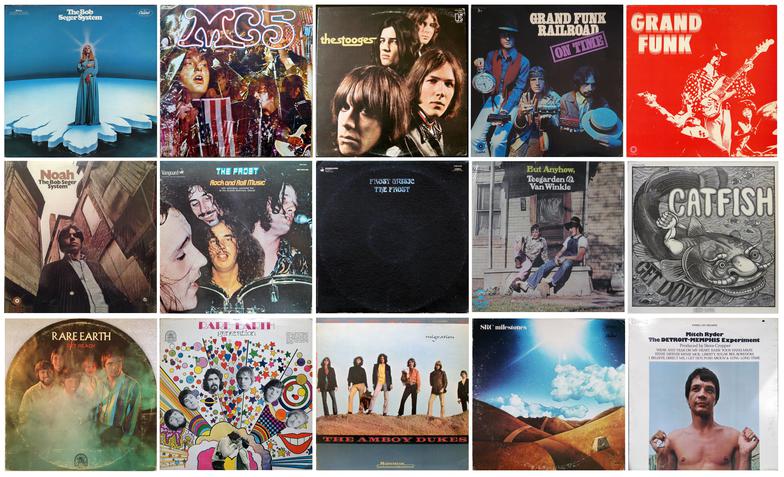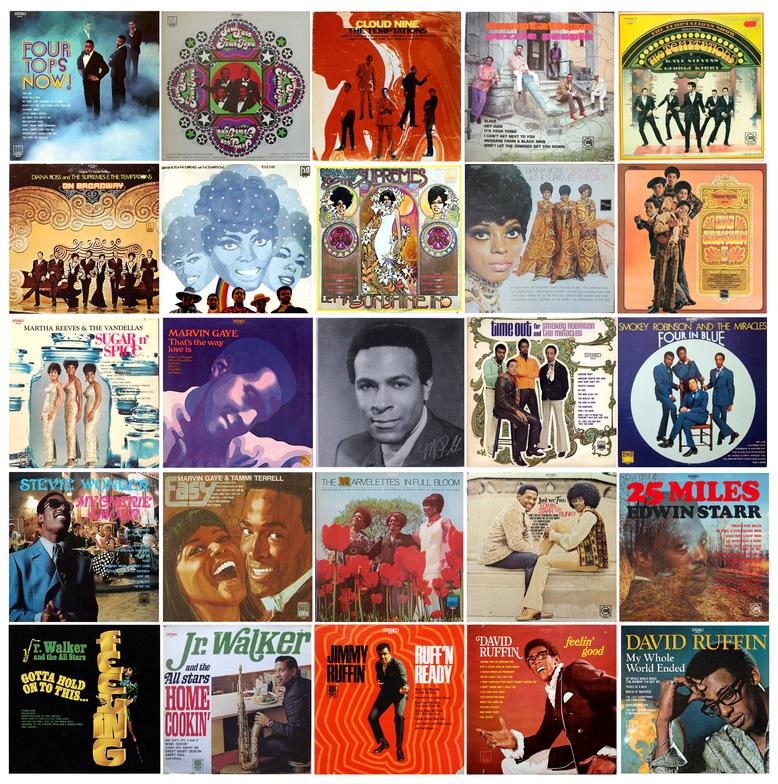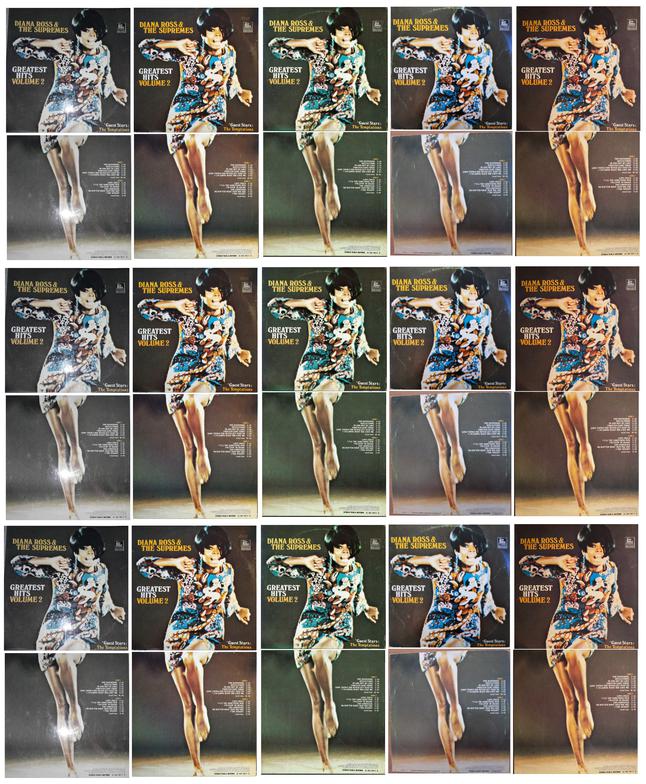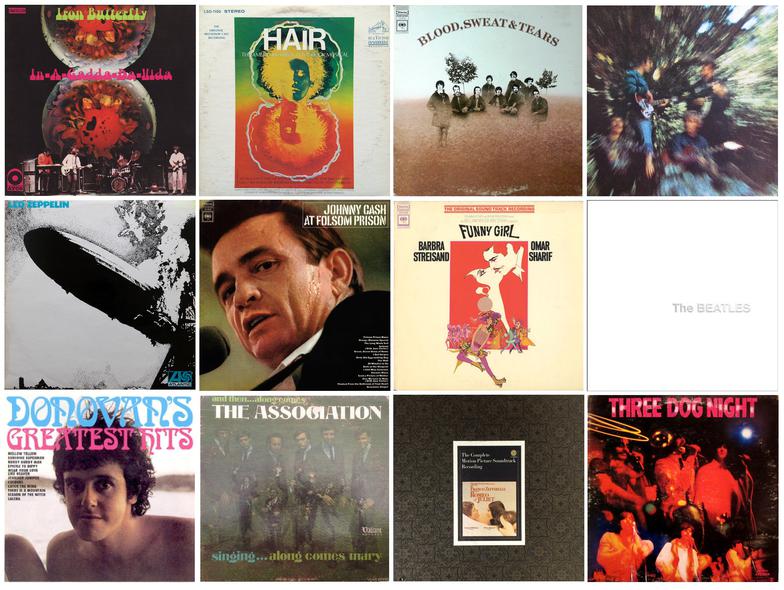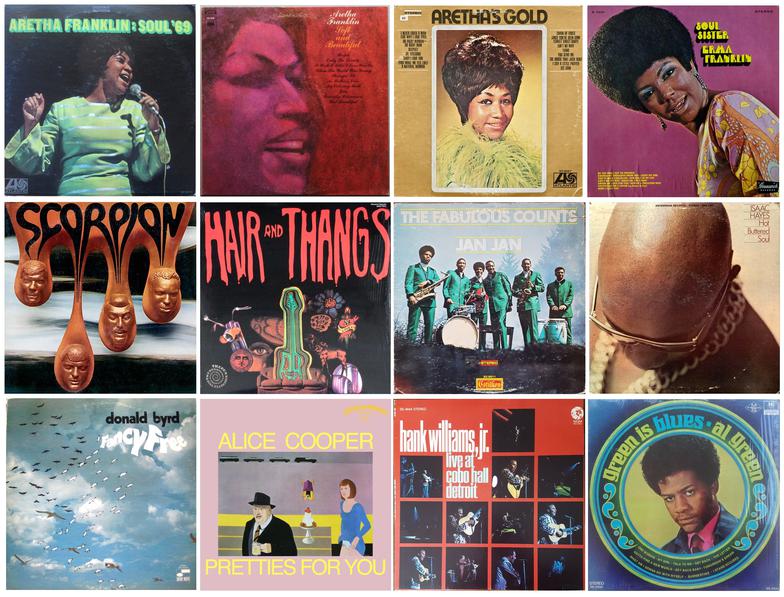Splatt Gallery
Double click here to add text.
Splatt Gallery's History of Michigan Concert Posters
Volume Five - 1969 - Page Twenty-Four
Sadly, a five-year holiday tradition in Detroit had come to an end. Every year, since 1963, the traveling stars of the Motown Revue would return home to The Fox Theatre on Woodward Avenue for a week-long celebration of shows running from Christmas to New Year, but in 1969 there were no more Motown Revues.
WCHB Radio presented a one-day Christmas show at The Fox on December 20, 1969. The Spinners represented a lineage that went all the way back to Alan Freed, who signed The Moonglows, who included Harvey Fuqua who married Berry Gordy’s sister and brought Marvin Gaye to Detroit. Fugua sang some lead and managed The Spinners on his Tri-Phi label before selling it to Gordy to incorporate into Motown. The Spinners only released one single per year from 1964 to 1971, scoring one big one in June, 1970, produced and written by Stevie Wonder.
The Spinners – It’s a Shame (1970)
https://www.youtube.com/watch?v=WoZP18U5VyY
***********************************************************
A full-page Invictus Records ad in the December 20, 1969 for “Music Box”, Ruth Copeland’s first single for the label. A white, female folk singer, born and raised in England, may seem an unlikely member of the P-Funk mob, but rather shows the inclusiveness of George Clinton’s merry bands.
She moved from England to Detroit, to come live with her sister, and began performing in the blues and folk clubs, was briefly was married to Detroit Lions’ quarterback Karl Sweetan, and was eventually discovered by Motown singer and songwriter Edwin Starr. She developed a relationship with Motown producer Jerry Bowen, whom she later married, and Bowen joined Holland-Dozier-Holland in setting up Invictus Records.
According to Copeland, their plan was “to create another Diana Ross, only white this time”, but despite the ad’s claim of “A Smash in Detroit – 48,000 Sold in Michigan”, the single did not catch on with the national audience. She was given a Holland-Dozier-Holland tune to write lyrics to, she wrote about missing her dog that was back in England, which were rejected, Ron Dunbar instead wrote the lyrics that would become Freda Payne’s hit “Band of Gold”.
George Clinton and Parliament were also signed to Invictus, and Copeland became involved in creating their debut album “Osmium”, getting co-producer credit with Clinton, and contributing two songs, “Little Ole Country Boy” and “The Silent Boatman”. The sessions for her first solo album were recorded around the same time, with the performances of the Parliament-Funkadelic musicians. A second album, and a tour supporting Sly & the Family Stone, were also essentially P-Funk affairs.
She co-wrote the song “Psycha-Soula-Funkadelic” for The Politicians featuring McKinley Jackson, wrote a couple more songs for Parliament, and toured as the supporting act for David Bowie. After releasing her third album, in 1976, Copeland left the music business, and became an executive at a publishing firm, disappearing from public view until 2010, when she granted some interviews about her interesting life.
Ruth Copeland – Music Box (1969)
https://www.youtube.com/watch?v=UMMfsI1QYcM
Parliament – The Silent Boatman (1970)
https://www.youtube.com/watch?v=GwekCW90TTA
Poster for the Eartharus Ecstacy Ball in Berkeley, California by Gary Grimshaw in exile, December 22, 1969. Purple Earthquake are about to shorten their name to Earthquake, who will release a couple of albums, leading to the creation of the Beserkley Records label.
Purple Earthquake – Can’t you See it’s Me (1967)
https://www.youtube.com/watch?v=DGHF1d1xD7U
Poster/ad for Diana Ross & the Supremes at the Frontier Hotel in Las Vegas, Nevada from December 23, 1969 through January 14, 1970, their final performances.
A holiday collage by poster artist James Render for Christmas 1969. On December 25, 1969, it had been eight months since Render’s last concert poster, for an April show at the Silverbell. The eight month absence was nearly the same amount of time as Render’s ten month period of making concert posters, which lasted from June 1968 through April 1969.
The ten months had been prolific, with a total of 67 posters, nearly seven per month. The large majority (nearly 75%) of the posters had been made for venues managed by Punch Andrews, including the Clawson Hideout, the Silverbell, and the Something Different club in Southfield, Michigan, his 31 posters for the Silverbell were his most for any single venue. Andrews must have had a contract with Spectrum Design, the firm that provided Render with the information that they wanted on the posters. The act or group that was the most documented in Render’s posters was Andrews main, soon to be sole, client, Bob Seger.
Like his holiday posters (he had also made a Christmas poster and a Thanksgiving poster, both in 1968), the majority of Render’s concert posters were collage, or more exactly, photomontage art. Render was unique among Michigan poster artists in utilizing this technique, in fact unique among poster artists in the country, the only other that we can think of was San Francisco artist David Singer’s posters for Bill Graham’s Fillmore shows.
A group of concert posters/flyers by James Render, about 60% of the complete collection.
A Christmas Concert at Symphony Hall in Newark, New Jersey, December 27, 1969, which was the first East Coast appearance for Frost, opening for Mountain.
An awesome poster by Al Shamie (Bad Dog) for SRC at the Borderline in Monroe, Michigan on December 27, 1969, with a note at the bottom that reads “coming soon, by popular demand, the repulsive Stooges!”
Shown above is a collection of picture sleeve singles for the twelve Number One hits by the Supremes from August 1964 through December 27, 1969. The total of twelve puts the Supremes in sixth place of the artists with the most Number One singles, behind the Beatles (20), Mariah Carey (19), Elvis Presley (18), Rihanna (14), and Michael Jackson (13), and tied at twelve with future fellow-Michigan artist Madonna. Fellow-Motown artist Stevie Wonder is in eighth place with ten Number One singles.
Their first five #1’s were consecutive releases; they had another four in a row with “You Can’t Hurry Love” through “The Happening”.
They had two records that peaked at #2, “Reflections” and “I’m Gonna Make You Love Me”, and four others that reached the Top Ten ("My World Is Empty Without You", "Love Is Like an Itching in My Heart", "In and Out of Love", and "I'm Livin' in Shame").
Of the twelve Number One hits by the Supremes, “Love Child” is their overall biggest hit, as calculated by Billboard magazine.
The eighteen studio albums by the Supremes, with Diana Ross, from 1962 through 1969.
In answer to the colloquial question, “Who Needs Miami?” on Carl Lundgren’s poster, that got extended life through the multiple re-appropriations, Miami got in the last word with a final three-day festival, December 27-29, 1969, billed as the “last rock festival of the 60’s”.
The term “Miami Pop Festival” itself had been tossed around loosely in regards to any number of events that happened in the state of Florida. The first “Miami Pop Festival” in May, 1968 was actually officially called “The 1968 Pop Festival” and was the one that featured Jimi Hendrix. The only true “Miami Pop Festival” was the one in December 1968 with the comic book we featured previously. That is the one that is commonly considered the first major rock festival on the East Coast, perhaps because the one in May was hampered by a rain-out (?)
The “Miami Pop Festival” that the MC5 had to abort due to warnings of their pending arrest in Florida in March 1969 was actually the “Easter Rock Festival” and it was in Ft. Lauderdale. The “Miami Pop Festival” that the Rolling Stones played in November, 1969 was actually the “Palm Beach Pop Festival” and was in Palm Beach. And finally, this event, the “last rock festival of the 60’s”, was officially the Miami “Rock” Festival, and it included an appearance by the Amboy Dukes.
So, that’s finally sorted out.
The festival mania reached the inevitable height of absurdity when a New York promoter placed a story in Billboard magazine that the U.S. Government itself was preparing to present the ultimate festival of them all, planned for the summer of 1970, to be called “The United States Peace Festival”, a free, week-long event, at a constructed site in the Arizona desert, expected to draw one to three million people. An alleged advisory board had been assembled, consisting of Nixon White House aides, Arlo Guthrie, John Lennon, Tommy James, Peter Fonda, with Otto Preminger enlisted to film the event, and a long list of corporate sponsors, from AT&T, General Motors, U.S. Steel, and Mobil Oil, to Borden’s Milk had signed on. A logo, featuring a rising sun, had already been designed.
Obvious conspiracy theories concerning the government’s true motives in rounding up a million hippies into a fenced-in compound in the middle of the desert, sprouted immediately, brilliantly illustrated by San Francisco comic artist Dave Sheridan. Billboard published a retraction the next week.
The Woodstock Whisperer counts up 41 rock festivals in 1969 and that’s only including four of the Michigan ones, they acknowledge the fact that Michigan had many more, in our count we came up with 21, so that’s fifty-eight between us and them.
Wrapping up what had certainly been THE year for pop and rock festivals, the Chicago Pop Festival, December 29, 1969 re-used the same poster that Carl Lundgren had designed for the first Detroit Pop Festival way back in April, and which had already been re-used for the Grand Rapids and Saginaw festivals as well, each one always asking, “Who needs Miami?”
Michigan artists at the Chicago Pop Festival included the MC5, John Lee Hooker, Bob Seger, the Stooges, and Alice Cooper.
An article in The Chicago Seed newspaper called it the “Chicago Poop Festival” and righteously railed against the trend to label every multi-act concert as a festival, particularly in a cramped venue such as the Aragon Ballroom, which he saw as pure capitalist exploitation, and he had especially sharp, and again righteous, criticism for promoter Mike Quatro, making special note that he lived in a $50,000 home (!) in Grosse Pointe.
The writer, named Eliot, was also apparently in the camp of MC5 fans who felt the band lost something when they separated from John Sinclair, he printed Sinclair’s parting quote to the band, “You only wanted to be bigger than The Beatles and all I wanted was for you to be bigger than Mao Tse-Tung.”
A collection of ads by Dennis Preston for the Free Spirit mall in Lansing, Michigan, in December 1969.
All that was left to finish off the year, and the decade, were the New Year’s Eve shows. The Silverbell presented Bob Seger and Brownsville Station, as announced by unknown poster artist. The poster also lists the band Love Sculpture, performing their fifth, and final, show in Detroit all in the month of December, 1969.
In our research to find other New Year’s Eve happenings around town, we came across this page from the December19,1969 issue of The Detroit Free Press, (don’t even attempt to read it, as we’re too cheap to subscribe, we’re only offering it as proof).
Mike Gormley’s column provides an interesting state-of-the-city glimpse of the Detroit music scene in the final days of sixties. He makes note of the confusion from the alternating schedules of the Eastown Theater and the Grande-Whatever, and he says:
“Detroit people have much to complain about, they think. As it turns out, Detroit people have much to be happy about. Everywhere in the country, especially in New York and Los Angeles, clubs are constantly closing down. Not the local bars but clubs like the Cafe Au Go Go it started the whole thing and others. In New York, The Scene recently closed up leaving the city with the Fillmore- East and the Electric Circus. They don't serve the purpose. Detroit people are extremely lucky to have all the outlets for every top group in the world to visit. They are also getting spoiled, continually expecting the best. But that may well be the reason Michigan bands, even the lesser known groups, rank among the best in the world.
He also describes an interesting “unprecedented” summit meeting between “six of Michigan's top booking agencies to discuss their roles in the dynamics of the music industry, Kramer-Day Associates in Detroit, Diversified Management, Gall Rice, Jerry Patlow Agency, A & A Productions and A-Square Productions.
“Solutions are being sought to prevent the foreseeable demise of the strong Michigan rock scene by dealing directly with the depraved, often maniacal business tactics of some of the bands and club owners, who threaten everyone's Interests. Monthly meetings will be held to dissect pertinent situations, and immediate action is being taken to open all other communication channels." That's nice. Now, if the booking agencies keep their above words the next step is for the FM stations to discontinue their jealousy-based war they presently have going. That war in my head is the epitome of idiocy when you think of what the stations supposedly stand for. They say, or at least they used to say, they are the people's stations, the voice of the community. The stations I speak of are WABX-FM and WKNR-FM, with WXYZ-FM on the side lines, as they usually are ...”
And, in addition to this contemporary snap-shot of the current state of affairs, there is also a lengthy and complimentary article about a new artist, just embarking on a musical career under the name of Rod Rodriquez. You can see the headline “I Sing of Lonely People and the Rich”, and sure enough, that is a picture of him too, but as we all know now, despite this good publicity, Rodriquez disappeared quickly, until decades later when somebody went searching for the Sugar Man.
Sixto Rodriquez – Sugar Man (1970)
https://www.youtube.com/watch?v=E90_aL870ao
Year-ending shows at Punch Andrews’ Silverbell in Auburn Hills, Michigan, with Catfish and All the Lonely People on December 27, and the New Year’s Eve show with Bob Seger and Brownsville Station,and Love Sculpture “from England” on December 31, 1969.
New Year’s Eve, December 31, 1969, with two Michigan bands, Alice Cooper and Teegarden & Van Winkle at the Masonic Temple in Toronto, Ontario, Canada.
Russ Gibb seems to have given upon the Grande Riviera, closing it down at the end of November after only two months of operation and he re-opened the Grande Ballroom for a New Year’s Eve show on December 31, 1969 with Frost, Sky, Richmond, Virgin Dawn, and McKenna Mendelson Mainline.
Meanwhile, the Eastown Theater, after a brief shut-down in mid-August, had reopened in mid-September and was on a roll with a New Year’s Eve party with Grand Funk Railroad.
For GFR, it was the end of their first seven months as a group, with close to (80) shows around the country. At least ten of those shows were in their home state of Michigan, with (5) at the Eastown. On New Year’s Eve they headlined a bill that included Savage Grace, Head Over Heels, and Bobby Franklin’s Insanity.
Let’s peak in on the festivities with this cheery number live from Frost at the Grande Ballroom:
Frost – Mystery Man (live at the Grande Ballroom) (1969)
https://www.youtube.com/watch?v=MaaF13QbzMc
Newspaper events column with Frost, Sky, Richmond, Virgin Dawn, and McKenna Mendelson Mainline at the Grande Ballroom on New Year’s Eve, December 31, 1969.
Newspaper ad for the Troubadour in Los Angeles, California with a year-end/new year stand by Longbranch/Pennywhistle, two Detroit boys who had followed their girlfriends out to Southern California.
John David (J.D.) Souther was born in Detroit, grew up in Amarillo, Texas, and moved to Los Angeles, California, where he met and married Alex Sliwin, a singer in a group called Honey Ltd., a band that included Silwin’s sister Joan and had started out as the Mama Cats back in Michigan. The Mama Cats were among the groups that got their start at Dave Leone’s Hideout club and had a single released on Leone’s Hideout Records label that was written and produced by Bob Seger. For their live gigs, the girls were backed a group called The Mushrooms that featured guitarist/singer Glenn Frey.
The Mama Cats decided to move to Los Angeles where they met producer Lee Hazelwood who changed their name to Honey Ltd., and produced their only album in 1968. Frey, who also dated Joan Silwin, followed her out to California, where he met Alex’s husband, J.D. Souther. Souther and Frey hit it off and formed a duo called Longbranch/Pennywhistle, who released a self-titled album right around the time of these shows.
Souther and Sliwin got a divorce and Souther began dating Linda Ronstadt. They began looking for a back-up band to tour with Ronstadt and found drummer Don Henley. To fill a guitar slot, Ronstadt suggested to Souther, “let’s get Glenn”. Ronstadt also had guitarist Bernie Leadon and bassist Randy Meisner in her revolving stable of backing musicians. The four of them actually only performed together once, backing Ronstadt at a show at Disneyland in the summer of 1971, but she encouraged them to form their own group, which they did, called “Eagles”.
Longbranch/Pennywhistle – Run Boy Run (1969)
https://www.youtube.com/watch?v=b449xvDqX0M
AM Radio was still supportive of its local scenes and the Keener-13 year-end Top Twenty for 1969 was probably the only in the country to have Funkadelic, MC5, and Frost on it.
But Detroit was no different than the rest of country when it came to the stranglehold that “bubblegum pop” had on the AM dial, everyone was nauseatingly “Dizzy” from the “Sugar, Sugar” of all the “Buttercup”.
And then, completely by accident, a late-night toss-off created by a couple of Mercury studio musicians in New York City needing a B-side to a single, without a band name, recorded the most perfect pop song of all time by virtue of needing to stretch the song length with meaningless lyrics, and a bongo solo.
There is no better song to end this decade, as we say a final goodbye to the 1960’s.
Steam – Na Na Hey Hey Kiss Him Goodbye (1969)
https://www.youtube.com/watch?v=QaG2Acg8n60
Shown above are the twenty-five most substantial albums released by John Lee Hooker during the 1950’s and 1960’s. Hooker’s discography can be a rats nest, with all of his different aliases and different labels, many albums were re-released under new names, there are well over 450 compilations in his name and over 2,500 appearances on other compilations. There can be subtle title differences, such as “Sings Blues” and “Sings The Blues”.
There are around 70 albums considered as distinct releases, so having a little more than a third of them in this “first period” seems about right. There about 200 tracks from these twenty-five albums with practically no duplication.
Shown above are the three album covers and a handful of picture sleeve singles from Mitch Ryder’s solo run of 1967 through 1969.
The “Joy” EP, released in Spain, had three Ryder & the Wheels tracks from the “Sock It To Me” album and credited the Detroit Wheels on the back cover. The Demark picture sleeve for “Joy”, as previously posted, had a group photo on the cover and was credited to Mitch Ryder & the Detroit Wheels. The German picture sleeve for “Ruby Baby”, a Ryder solo track, had a Ryder & Wheels B-side and the cover credited as Mitch Ryder & the Detroit Wheels.
The “New Sensation” EP, released in Brazil had “Memphis Experiment” tracks. Bob Crewe released two compilation albums of Ryder & the Wheels tracks, but credited them solely as “All” Mitch Ryder.
Most of Ryder’s solo singles were not graced with a picture sleeve, there were eight of them all together.
A promotional flyer for the debut single by Brownsville Station, “Rock & Roll Holiday”, released in 1969. Initially released on Punch Andrews’ Hideout Records label, it was also the final single in the label’s five-year run (although the label will pop up again sporadically, most notably with the mysterious 1973 single by Phantom’s Divine Comedy).
Brownsville Station - Rock & Roll Holliday (1969)
https://www.youtube.com/watch?v=f7NCND4DGLQ
In 1969, Punch Andrews released the debut single by Brownsville Station and a solo album by Bob Seger’s drummer Pep Perrine on his Hideout Records label, the final releases in the label’s five-year run (although the label will pop up again sporadically, most notably with the mysterious 1973 single by Phantom’s Divine Comedy).
Starting with the 1965 single “The Man In The Glass” by the Underdogs, there were fifteen singles and three albums released on the Hideout Records label from 1965 through 1969. We have previously recounted the stories behind most of these records, although we missed this one:
T.R. & The Yardsman - I Tried (1965)
https://www.youtube.com/watch?v=eW2OMevG-zE
Back to the posters, and for the final wrap-up, here are our ten favorite Michigan concert posters for 1969.
Detroit Pop Festival – Olympia Stadium, Detroit – 04/07/69 – artist Carl Lundgren
Detroit Rock & Roll Revival – Michigan State Fairgrounds – 05/30/69 – artist Gary Grimshaw
Eastown Theater Opening – Detroit – 05/29/69 – artist unknown
Cosmic Circus – King Animal Land, Richmond, Michigan – 10/26/69 – artist J+S Stoddard
Come Together Pop Concert – Saginaw, Michigan – 11/26/68 – artist Chris Frayne (Ozone)
Black Magic – Olympia Stadium, Detroit – 10/31/69 – artist Linz
Amboy Dukes – Silverbell, Auburn Hills, Michigan – 03/22/69 – artist James Render
B.B. King – Eastown Theater, Detroit – 9/19/69 – artist Al Shamie (Bad Dog)
Kalamazoo Rock Revival – Kalamazoo, Michigan – 6/8/69 – artist Dave Baker
MC5 – Grande Ballroom, Detroit – 04/04/69 – artist Gary Grimshaw
By a rough count, we have documented 307 Michigan concert posters for the year 1969, the most in any year so far, and it will remain the peak year for the following decade.
New artists to emerge during the year included Chad Hines, Al Shamie, Dave Baker, Darlene Pond, Chris Frayne (Ozone), Carol Ann, Dennis Preston, Mary Partridge, Dennis Garascia, Doug Huston, and the artists at Grand Valley State Colleges in Allendale.
There were over 90 pieces by “an unknown artist”, some of the best of the unknown artists are shown above.
The End of Volume Five - 1969
1969 was a break-out year for albums by Michigan rock groups, with debut releases by Bob Seger, MC5, Stooges, Grand Funk Railroad, Frost, and Catfish. Seger, GFR, and Frost also released their second albums within the year.
The Amboy Dukes released their third album (with a corresponding third band line-up), SRC and Teegarden & Van Winkle each released their seconds, Rare Earth released their second and their third, and Mitch Ryder released his second solo album.
Jump back to the beginning of Volume Five - 1969 - HERE
The Motown machine cranked out more than sixty albums in 1969, twenty-five of them are shown above. The label’s top groups, the Supremes and the Temptations released seven between them; individually and collaboratively. Motown’s most successful album for the year was “Cloud Nine” by the Temptations.
The gatefold cover for the two-LP set “Diana Ross & The Supremes – Greatest Hits Volume 2”, only released in the Netherlands, Denmark, Sweden, and Germany in 1969.
Nation-wide, these were the twelve top-selling albums in 1969, according to Billboard magazine. The Temptations album “Cloud Nine” was #14.
On the weekly charts, the soundtrack album “Hair” held the number one spot the longest, with 13 weeks at the top. Iron Butterfly's “In-A-Gadda-Da-Vida” was the best-selling album of year despite never reaching #1 at any point during the year, peaking at #4 in August.
The only Motown album to reach #1 on the weekly chart was the “TCB” soundtrack by the Supremes with the Temptations.
A few more Michigan-related albums from 1969 include three from Aretha Franklin and one from her sister Erma, the magnificent Scorpion album, featuring Bob Babitt (bass), Mike Campbell (vocals), Ray Monette (guitar), and Andrew Smith (drums), the debut “solo” album by Dennis Coffey and debut album by the Fabulous Counts, an album from the extensive discography of Donald Byrd, and the second album by Al Green.
Also shown is a live album by Hank Williams Jr. recorded at “Cobo Hall, Detroit”, the debut album by Alice Cooper, even though the group has not yet moved to Michigan, and finally, Isaac Hayes’ classic “Hot Buttered Soul” which was recorded at Terra Shirma studios in Detroit.


